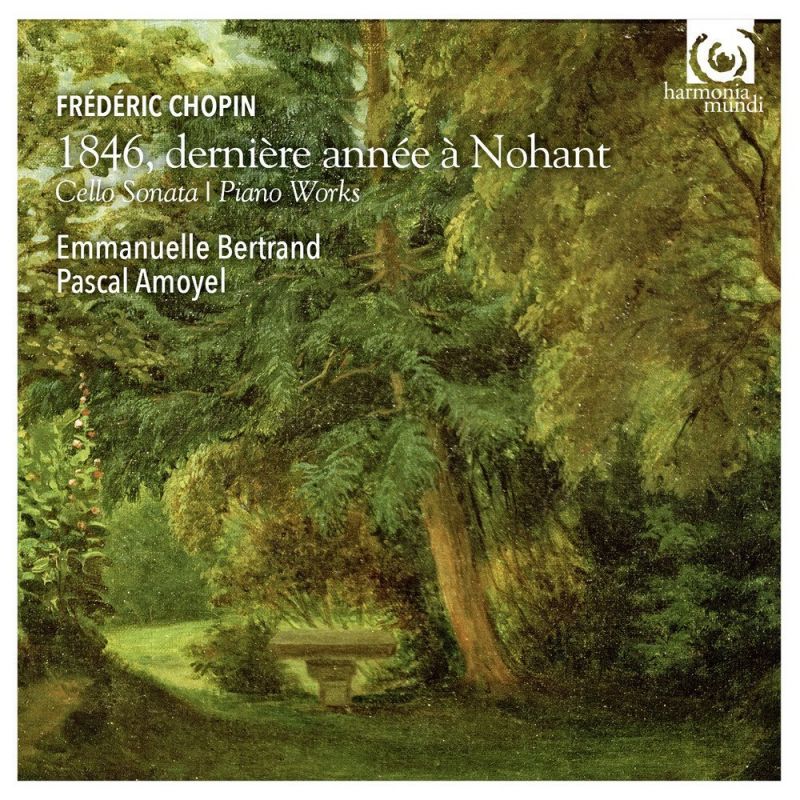CHOPIN 1846: Last year at Nohant
View record and artist detailsRecord and Artist Details
Composer or Director: Fryderyk Chopin
Genre:
Chamber
Label: Harmonia Mundi
Magazine Review Date: 04/2015
Media Format: CD or Download
Media Runtime: 72
Mastering:
DDD
Catalogue Number: HMC90 2199

Tracks:
| Composition | Artist Credit |
|---|---|
| Barcarolle |
Fryderyk Chopin, Composer
Fryderyk Chopin, Composer Pascal Amoyel, Piano |
| Mazurkas (Complete), Movement: Op 63 Nos 1-3 |
Fryderyk Chopin, Composer
Fryderyk Chopin, Composer Pascal Amoyel, Piano |
| Sonata for Cello and Piano |
Fryderyk Chopin, Composer
Emmanuelle Bertrand, Cello Fryderyk Chopin, Composer Pascal Amoyel, Piano |
| (3) Waltzes |
Fryderyk Chopin, Composer
Fryderyk Chopin, Composer Pascal Amoyel, Piano |
| Mazurkas (Complete), Movement: No. 45 in A minor, Op. 67/4 (1846) |
Fryderyk Chopin, Composer
Fryderyk Chopin, Composer Pascal Amoyel, Piano |
| Nocturnes, Movement: No. 17 in B, Op. 62/1 |
Fryderyk Chopin, Composer
Fryderyk Chopin, Composer Pascal Amoyel, Piano |
| Nocturnes, Movement: No. 18 in E, Op. 62/2 |
Fryderyk Chopin, Composer
Fryderyk Chopin, Composer Pascal Amoyel, Piano |
Author: Jeremy Nicholas
Finally, the performances of Amoyel and Bertrand (very well recorded in an intimate but not claustrophobic acoustic) are aptly scaled to the salon rather than the concert hall. Does Amoyel make the Barcarolle a little laboured after its climax? Perhaps; but then afterwards he floats the right hand over the barcarolle rhythm to magical effect. In the Sonata, the balance between Amoyel and Bertrand’s mellifluous cello strike me as near ideal in the problematic first movement of the Sonata, and they observe its repeat, unlike other fine versions by such as Ma and Ax (Sony) and Kliegel and Glemser (Naxos). If Amoyel has nothing particular to say about the three Waltzes, Op 64 (unshowy and stylish), in the two Nocturnes, Op 62, he conjures up with great sensitivity an image of the heartbroken composer in lonely contemplation at Nohant.
Explore the world’s largest classical music catalogue on Apple Music Classical.
Included with an Apple Music subscription. Download now.

Gramophone Digital Club
- Digital Edition
- Digital Archive
- Reviews Database
- Events & Offers
From £9.20 / month
Subscribe
Gramophone Club
- Print Edition
- Digital Edition
- Digital Archive
- Reviews Database
- Events & Offers
From £11.45 / month
Subscribe
If you are a library, university or other organisation that would be interested in an institutional subscription to Gramophone please click here for further information.






